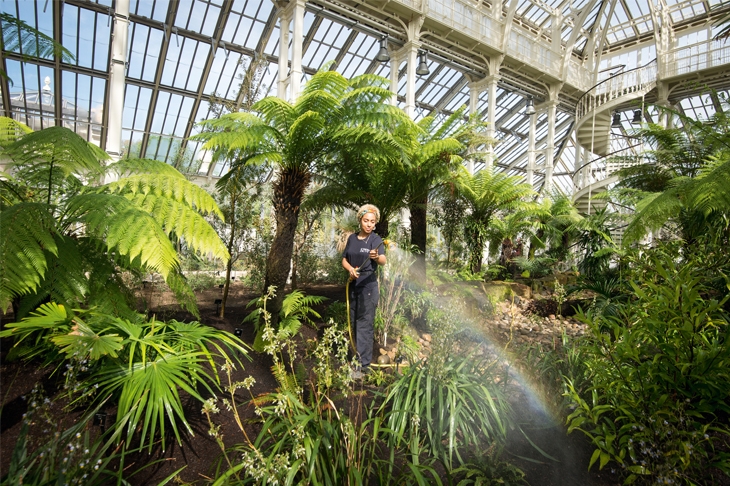The glasshouses at Kew Gardens are so popular that they can be quite unbearably busy at weekends. And why shouldn’t they be? They’re beautiful structures and the plants they shelter are so marvellous that they deserve the attention they get, whether from botany nerds, schoolchildren, or millennials dressed for Instagram and posing for selfies in the steamy leafy heat. But for the past five years, the biggest member of the Kew family has been closed to the public. Hidden under an enormous awning that the botanic gardens boasts could have covered three Boeing 747s (one of those area-the-size-of-Wales facts that mean very little), the Temperate House has been undergoing a lengthy restoration.
This isn’t just the largest glasshouse at Kew, it’s also the largest surviving Victorian glasshouse in the world. More pointless facts abound, such as the number of panes of glass (15,000) that needed replacing, urns that needed removing and restoring (116) and litres of paint used (5,280). The landscapers are still finishing off the area around the building, which first opened in 1863, and inside things don’t feel quite complete either. Though a number of the older, larger plants had to stay put while the builders worked around them, many were moved, and so everything naturally looks very freshly planted. There are some rather municipal-looking relatives of the common Busy Lizzie (Impatiens hawkeri) planted in the beds as a tribute to the floral displays that the original Victorian gardeners planted, and the soil looks shiny and new. The plants, from temperate regions across the world, will look much more at home after a few months, when they have started sprawling over one another and covering the soil with leaf mould and discarded petals.
That’s not to say that the whole thing isn’t glorious: one of the things that makes it feel so very new and shiny is the sheer scale of the glasshouse, and the amount of space it has, not just for the plants but also for people.









Comments
Join the debate for just £1 a month
Be part of the conversation with other Spectator readers by getting your first three months for £3.
UNLOCK ACCESS Just £1 a monthAlready a subscriber? Log in